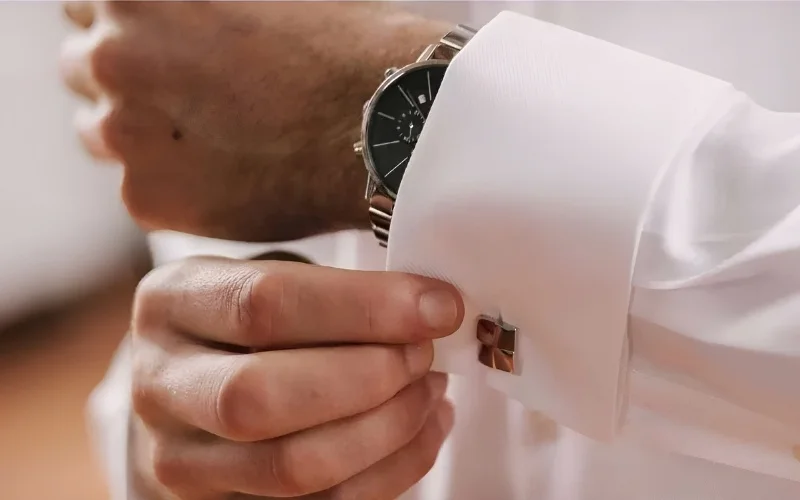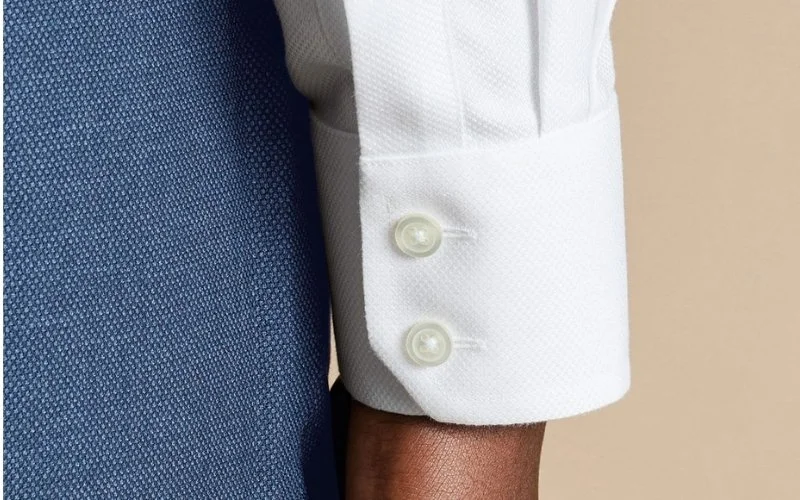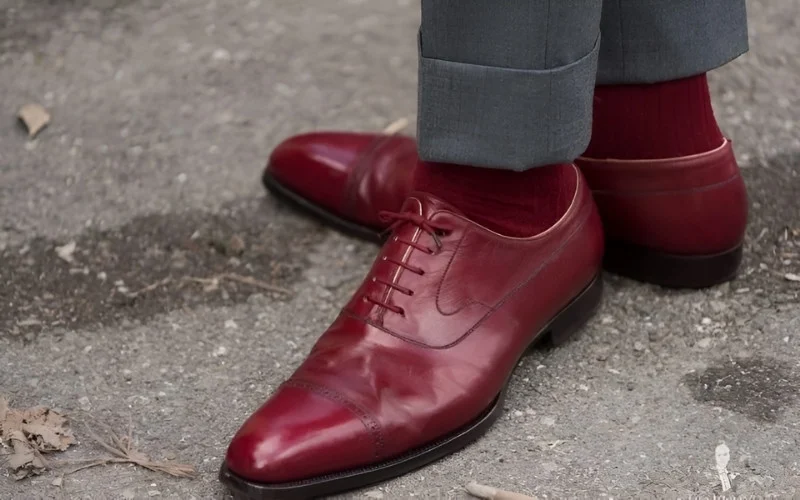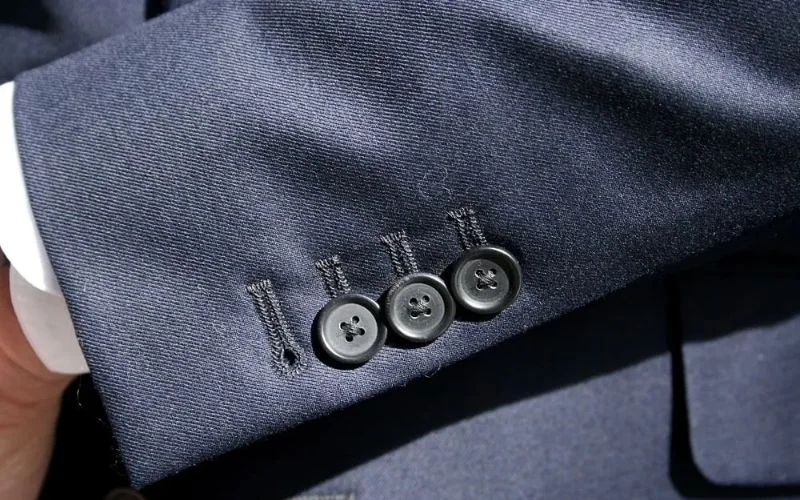Apparel Business Guide to Cuffs: Style And Specs
This guide explores various cuff types for sleeves and trousers, explaining their functions, construction, and style implications. By understanding how these details impact final garment appearance, customer perception, and production specifications, apparel businesses can make more informed decisions for sourcing and design.
1. What exactly is a cuff in the world of clothing?
In apparel, a cuff refers to the finished edge at the end of a sleeve or trouser leg. This garment component serves multiple purposes beyond simply finishing the raw fabric edge. Primarily, cuffs protect fabric edges from fraying and wear. They also provide structure to the end of the sleeve or leg, influencing how the material falls.
For sleeves, cuffs often facilitate wrist closure using buttons or links. Aesthetically, the style of cuff contributes significantly to the overall look and formality of the garment. In trousers, cuffs add weight, which affects the trouser drape.
Construction typically involves either folding the main garment fabric back onto itself and stitching it down, or attaching a separate band of fabric constructed specifically for the cuff. Understanding this basic tailoring term is fundamental for anyone involved in clothing design or production.

1.1. Button cuffs (barrel cuffs): The versatile standard
The button cuff, commonly known as the barrel cuff, is the most prevalent type found on apparel today. Defined by its single layer of fabric that wraps around the wrist and fastens with buttons passing through buttonholes, this style is highly versatile.
Many shirt cuff designs feature two buttons side-by-side, allowing for an adjustable fit around the wrist. Barrel cuffs are the standard for the vast majority of ready-to-wear business shirts and casual shirts, offering practical sleeve finishing.
1.2. Single link cuffs: The traditional choice
Historically, the single link cuff represents the original style designed for cufflinks. These cuffs have buttonholes on both edges but lack the fold-back feature of French cuffs. Primarily associated with highly formal wear, particularly the requirements of White Tie attire, single link cuffs are less common in contemporary fashion. Their use is largely confined to traditional formal settings and requires the use of cufflinks for closure.
1.3. French cuffs (double cuffs): The elegant fold
French cuffs, also called double cuffs, are a type of link cuff distinguished by their extra length – the fabric is roughly twice as long as needed for a standard cuff before being folded back. The extra fabric is folded back upon itself, creating a neat double layer at the wrist. Like single link cuffs, they feature buttonholes on both sides and are fastened exclusively with cufflinks.
This formal wear detail lends an elegant and sophisticated appearance, making French cuffs a popular choice for business suits, formal shirts, and attire for Black Tie events. They signal a more style-conscious approach compared to standard barrel cuffs.

1.4. Convertible cuffs: The flexible option
Convertible cuffs offer a practical solution bridging the gap between button cuffs and link cuffs. This clever clothing detail is designed for flexibility: it has a standard button for regular closure but also includes an extra buttonhole, allowing it to be fastened with cufflinks for a more formal look. This versatile option is advantageous for retailers as it appeals to customers who appreciate having the choice without needing separate shirts for different occasions.
This clever clothing detail provides versatility for the wearer, allowing the cuff to be fastened using the attached button or with cufflinks. This flexible option is advantageous for retailers as it appeals to customers who appreciate having the choice without needing separate shirts for different occasions.
2. Decoding trouser cuffs (turn-ups)
Trouser cuffs, often called turn-ups (particularly in UK English), refer to the finish at the pant leg bottom where the fabric is folded upward on the outside of the trouser leg. This creates a visible band around the hemline. Beyond aesthetics, these cuffs serve practical functions. The extra layer adds weight, improving the trouser drape so the leg hangs more cleanly.
They also help protect fabric edges at the hem from wear. Historically and practically, turn-ups offer a simple method for length adjustment, particularly useful for growing children or before final tailoring. Stylistically, trouser cuffs are often seen as more traditional or associated with classic menswear, frequently paired with pleated trousers, whereas a plain hem is common in more contemporary fashion and slim-fit styles.

3. A note on jacket cuffs
On most ready-to-wear suit jackets and sport coats, the cuff at the jacket sleeve typically features several decorative buttons sewn onto the surface without corresponding buttonholes. These are purely aesthetic. However, a feature associated with bespoke tailoring and higher-quality garments is the surgeon’s cuff.
These cuffs have functional buttons and buttonholes, allowing the cuff to be unbuttoned and rolled back – a historical remnant from when surgeons might need to do so before operating. Today, functional surgeon’s cuffs are often considered a subtle quality indicator.
4. Why cuff details matter for your apparel business
For any apparel business, understanding cuff variations is crucial for several reasons:
- Communicating style/formality: The type of cuff significantly signals the intended style and formality level of a garment. French cuffs or link cuffs instantly suggest a more formal or dressy context than standard barrel cuffs.
- Meeting customer expectations: Different customer segments have varying preferences and needs. Businesses involved in wholesale clothing must understand market demands – whether buyers prioritize the formality of French cuffs, the versatility of convertible cuffs, or the practicality of barrel cuffs – to meet customer expectations.
- Perceived quality: Attention to detail, including the neatness of stitching and the appropriate choice of cuff style, contributes significantly to the overall quality perception of a garment. Well-executed cuffs suggest better craftsmanship.
- Sourcing and production: Clear production specs regarding cuff type, dimensions, and finishing methods are vital when sourcing manufacturing partners. Ambiguity can lead to errors, delays, and inconsistent final products. Specifying the exact clothing details ensures alignment between design intent and manufacturing output.

5. Related questions about cuffs
5.1. Are French cuffs harder to care for?
French cuffs require slightly more attention during care, primarily concerning ironing. Achieving a crisp fold often necessitates pressing them flat first, then folding and pressing again. Additionally, owning and using cufflinks is essential. Basic washing and drying depend on the shirt’s material, similar to barrel cuff shirts.
5.2. When are trouser cuffs (turn-ups) most appropriate?
Trouser cuffs or turn-ups are traditionally considered most appropriate with more classic styles, often paired with pleated trousers, heavier fabrics like flannel or tweed, and traditional footwear. They are generally less common on very modern, slim-fit trousers or casual pants like chinos, though garment style rules are flexible.
5.3. What’s the real difference between a barrel cuff and a convertible cuff?
The core difference lies in functionality. A standard barrel cuff can only be fastened using its attached buttons. A convertible cuff, however, is designed for flexibility: it has a standard button for regular closure but also includes an extra buttonhole, allowing it to be fastened with cufflinks for a more formal look.
Read more:
From the ubiquitous barrel cuff to the elegant French cuff and the practical trouser turn-up, cuffs are essential garment components that serve both function and style. Understanding these variations allows businesses to make informed decisions about design, production, and meeting customer expectations.
Paying attention to these clothing details, ensuring they protect fabric edges effectively and contribute to the desired aesthetic, reflects a commitment to quality. For any apparel business, mastering details like sleeve finishing and hem treatments is a key part of delivering garments that resonate with the target market. Utilize this knowledge to refine your offerings and production processes.






















